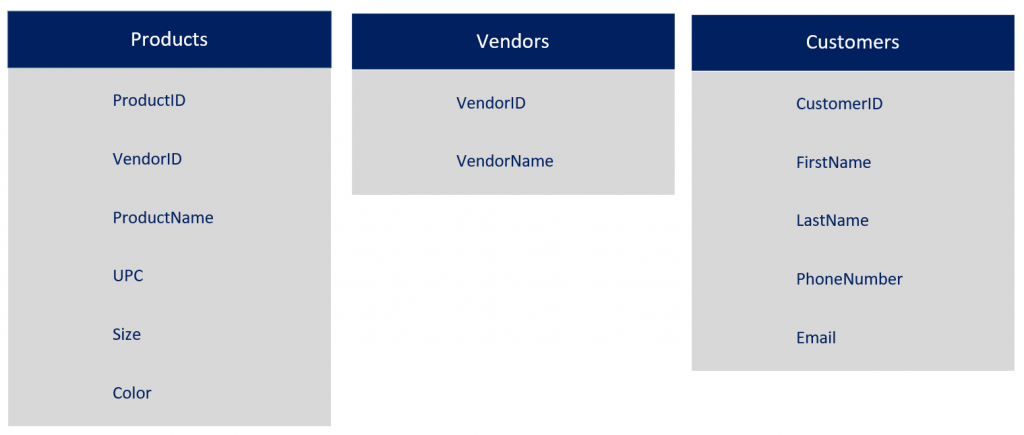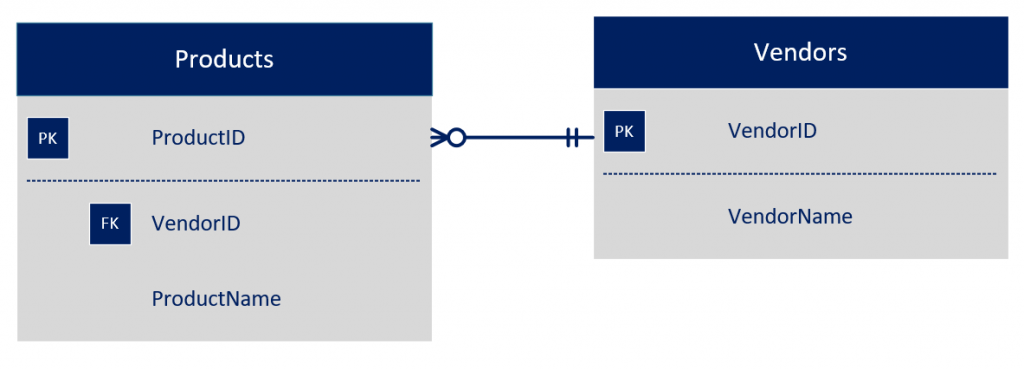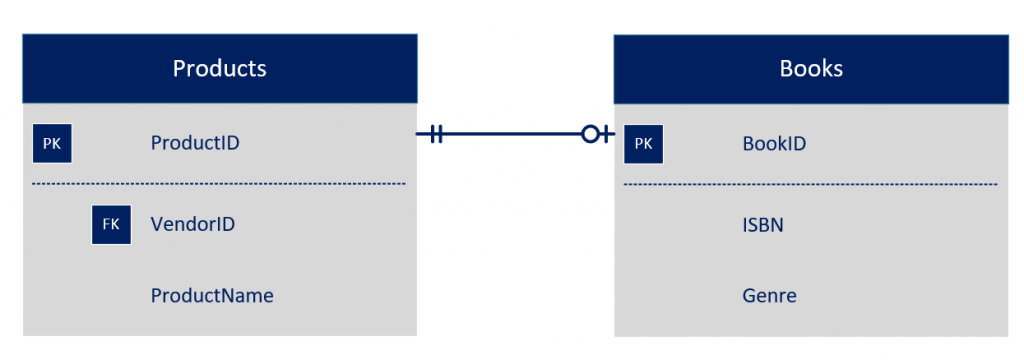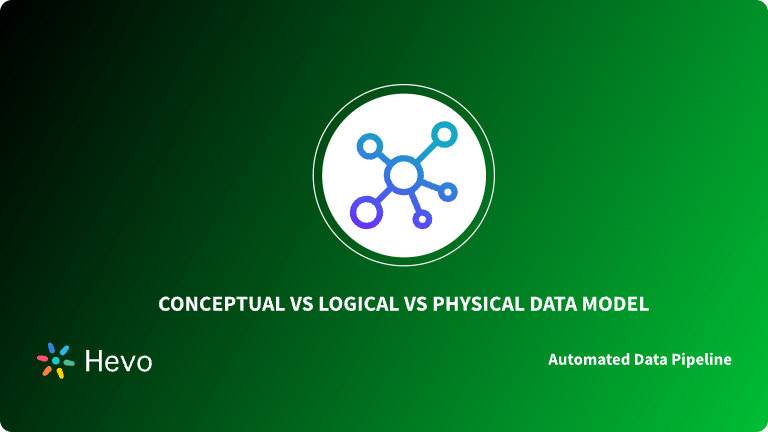Let’s say you’re building a new home. Now, the first thing you do is hire a Carpenter, a Plumber, and an Electrician to help you construct your house. Everyone gets to work and your home is raised in no time. But to your absolute dismay, the design didn’t fit well with your house layout. The Bathtub is in the Kitchen, the Stove is in the Hallway, the Pipes and Wires are going right through the middle of your Living Room, and the Bathroom doesn’t even get any Plumbing. Hiring an Architect to draw up Blueprints and supervise the construction would have saved you a lot of money and time.
Well, the same goes with data, and this is where Data Modeling and simple Data Models come into the picture. No matter where you work or what you do, data will always be a part of your process. You can think of a table of data as a room in the house, and this data house has tens of thousands of rooms in it. And that’s why you’ll need Data Modeling to design a Blueprint to un-complicate this data into useful information that organizations can utilize for smart decision-making and strategy. This article will help you understand Data Modeling and take you through various simple Data Models. Let’s get started.
Table of Contents
What is Data Modeling?
Data Modeling is the process of creating visual representations of Databases and Information Systems to communicate connections between data points and structures. It is the first critical step in defining the structure of available data which will support the analytical needs of the decision-makers. Data Modeling conceptually represents data with diagrams, symbols, and text to visualize the associations between different data objects. This is intended to illustrate the types of data, the relationships between them, the ways in which data can be arranged and organized, and its formats and attributes. And this abstract and conceptual representation of data is referred to as Data Model.
Today, Data Modeling finds its application across every sector you could possibly think of, from Financial Institutions to the Healthcare Industry. Data Modeling assigns relational rules to data and increases consistency in naming conventions, semantics, and security. It also enforces business rules, regulatory compliances, and government policies on the data. A study by LinkedIn rates Data Modeling as the fastest-growing profession in the present job market.
Hevo allows you to effortlessly transfer data from multiple sources into your data warehouse, making it easy to build your data model schema afterward. With Hevo’s no-code platform, you can manage the entire ETL process and focus on structuring your data in the warehouse of your choice.
- Automate data transfers from 150+ sources
- Perform pre- and post-load transformations
- Real-time data ingestion with minimal setup
Try Hevo and experience the seamless integration
Get Started with Hevo for FreeSimple Data Models
A Data Model is defined as an abstract and conceptual representation of data that describes the data associations, semantics, and constraints within a Database. This representation or framework is a critical component in the world of Data Warehousing as the data will be stored within this framework only. Building a simple Data Model requires your Business Professionals to engage in facilitated sessions with Data Architects.
The Data Modeling process starts by gathering information about business requirements from stakeholders and end-users. These business requirements are then translated into Data Structures to formulate a concrete Database Design. Data Models are generally divided into 3 categories based on their degree of abstraction. Let’s discuss the various simple Data Models in more detail.
Conceptual Data Models
A Conceptual Data Model offers a high-level big-picture view of data, its organization, and involved business rules. Also referred to as Domain Models, these models are used to explore concepts and requirements with stakeholders and end-users. Usually developed by Business Professionals and Data Architects, the purpose of Conceptual Models is to organize, scope, and define business rules, project requirements, and concepts. They typically include entity classes, their characteristics and constraints, their associations, and any relevant security requirements.
Logical Data Models
A Logical Data Model (LDM) typically sits between the Physical and Conceptual Models and provides greater detail into the concepts and relationships of your problem domain. Logical Models allow for the logical representation of data separated from its physical storage. Aimed at developing a technical map of rules and data structures, Logical Models typically include the logical entity types, their data attributes, and the relationships between these entities. LDMs don’t specify any technical system requirements and are generally used on traditional projects and not on agile projects. They can be useful in data-oriented and highly procedural implementation environments such as Data Warehouse designing.
Physical Data Models
A Physical Data Model (PDM) defines the schema or framework of a Database depicting how data will be physically stored in it. Aimed at the actual implementation of the Database, PDM is generally created by Database Administrators and Developers. Physical Models typically include the data tables, data columns, and relationships between the tables as well as the Primary and Foreign keys used to maintain those relationships. PDMs are generally useful on both agile and traditional projects.
How do Data Models describe Business Entities and Relationships?
As discussed, simple Data Models include entities, which are nothing but data objects or concepts. For instance, in a Sales Data Model, Products, Vendors, and Customers are all considered potential entities. Entities have attributes, which are nothing but the details to be tracked about entities. You can possibly think of attributes as the columns in a table. For instance, in the Products entity, ProductName is considered an attribute.

As discussed already, the data entities in a Data Model are connected to each other and these connections are called relationships. Data Entities don’t exist in isolation; they’re connected to each other. Relationships between data entities are defined based on the business rules and they can be one-to-one, one-to-many, or many-to-many.
For instance, the relationship between Products and Vendors is considered to be a one-to-many relationship assuming that a vendor makes multiple products.


Data Modeling Process
The Data Modeling process starts by gathering information about business requirements, data processing, and data storage from stakeholders and end-users. Let’s go through the sequence of tasks to be performed in an iterative manner for simple Data Modeling.
- Identify the entities: Data Modeling process starts with the identification of events or concepts that are described in the data set to be modeled. Each entity should be cohesive and logically distinct from other entities.
- Identify key properties of each entity: Each entity is distinct and has one or more unique properties, called attributes, which help in differentiating an entity from the rest.
- Identify relationships among entities: The next step is to specify the nature of the relationships between entities. Relationships are typically documented via Unified Modeling Language (UML).
- Map attributes to entities: This step ensures that a simple Data Model reflects how the business is going to use the data. Stakeholders use several Data Modeling patterns such as analysis patterns, design patterns, etc.
- Normalization: Normalization helps in organizing Data Models by assigning keys to groups of data. This helps in describing relationships between entities without repeating the data.
- Validate the Data Model: Data Modeling is an iterative process and it requires constant refining with changing business requirements. Hence, after the Data Model is set up, it must be validated for further use.
Data Modeling Examples
Let’s discuss the various simple Data Modeling examples.
- Hierarchical Data Models: Hierarchical Data Models are used to describe one-to-many relationships where each entity has a single root or parent mapping to one or more child tables. IBM Information Management System (IMS) was the first institution to implement this model which was introduced in 1966. Ever since its introduction, this model has been widely used in various sectors, especially in banking. It is now generally used in Extensible Markup Language (XML) systems and Geographic Information Systems (GISs).
- Relational Data Models: Initially proposed by E.F. Codd in 1970, Relational Data Models are still in use in various Relational Databases commonly used in enterprise computing. This model is commonly used in Point-of-Sale systems along with other types of transaction processing systems. Relational Data Modeling reduces Database complexity by explicitly joining data segments through the use of tables. And you must be already familiar with the fact that standard Structured Query Language (SQL) is used to manage data in Relational Databases.
- Entity Relationship (ER) Data Models: As the name suggests, this model uses formal diagrams in the form of Entity Relationship Diagrams (ERDs) to represent the relationships between different entities in a Database. Several ER modeling tools can be employed by Data Architects to visualize Database designs.
- Object Oriented Data Models: This simple Data Model gained popularity with the rise of Object Oriented Programming in the mid-1990s. Objects are organized in class hierarchies and have associated features. Object Oriented Databases generally include tables but also have the capability to support more complicated data relationships. This model is more commonly used in multimedia and hypertext Databases.
- Dimensional Data Models: Developed by Ralph Kimball, Dimensional Data Models were designed to boost analytical operations by optimizing data retrieval speeds in a Data Warehouse. However, Dimensional Models tend to increase redundancy for easy reporting and retrieval of information. This model is typically used in OLAP systems.
Benefits of Data Modeling
Here are a few benefits or advantages of simple Data Modeling.
- Data Modeling helps organizations identify correct the right set of Data Sources to populate the Data Model.
- As discussed earlier, Data Modeling helps in enforcing regulatory compliances, governmental laws, and applicable industry regulations.
- Data Modeling improves consistency in the documentation of Data Sources and Data Mappings, design of Data Systems, and Database performance. It ensures high-quality data use with minimal errors in Database development.
- Data Modeling streamlines the communication process within an organization across different teams like Developers, BI Teams, etc.
- Data Modeling is aimed at representing data, data objects, and relationships among them in a structured and accurate manner. Detailed but simple Data Models assist and simplify the building of the physical Database.
Transform your data strategy using a product information management data model. Explore how it can drive better data integration and efficiency.
Learn more about :
Conclusion
Organizations today are overflowing with data. The amount of data produced every day is truly staggering. Trying to manage humongous amounts of data without a proper plan and design is going to be really challenging. That’s a game of data hide and seek you don’t wanna play, and that is why you need Data Modeling. In simple words, Data Modeling creates simple Data Models for the data to be stored in a Database.
This article introduced you to Data Modeling and took you through various aspects of simple Data Models. However, it’s easy to become lost in a blend of data from multiple sources. Imagine trying to make heads or tails of such data. This is where Hevo comes in.
Hevo Data with its strong integration with 150+ Sources allows you to not only export data from multiple sources & load data to the destinations, but also transform & enrich your data, & make it analysis-ready so that you can focus only on your key business needs and perform insightful analysis.
Give Hevo Data a try and Sign Up for a 14-day free trial today. Hevo offers plans & pricing for different use cases and business needs, check them out!
Share your experience of understanding simple Data Models in the comments section below.
FAQs
1. What is a simple data model?
A simple data model represents data and its relationships in a straightforward way, often using basic structures like tables, columns, and rows. It emphasizes clarity and ease of understanding without complex layers.
2. What is an example of simple data?
An example of simple data is a customer list containing columns like Name, Email, Phone Number, and Address, stored in a spreadsheet or a basic database table.
3. What are the 4 types of data modeling?
The four types of data modeling are Conceptual, which defines high-level business entities and relationships; Logical, which details the structure and attributes of the data; Physical, which focuses on how data is stored in a database; and Dimensional, used in data warehouses for analytical purposes.




